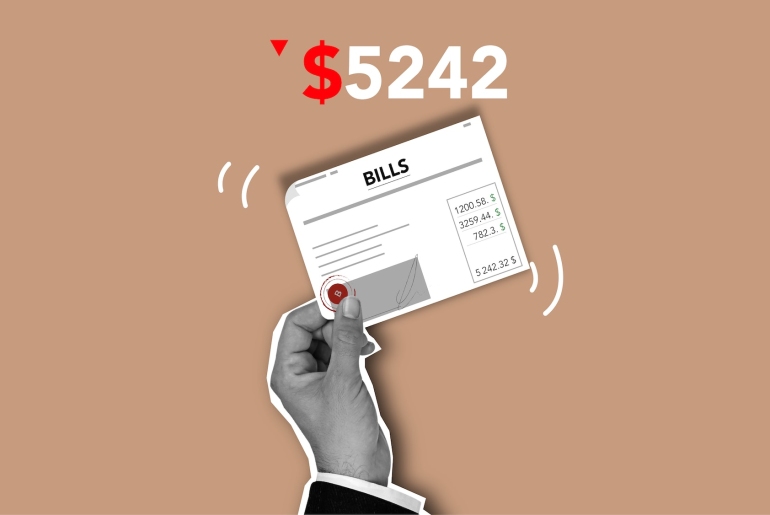This article may contain references to products or services from one or more of our advertisers or partners. We may receive compensation when you click on links to those products or services. Nonetheless, our opinions are our own.

Updated by Albert Fang
The United States is known for its complex and varied tax laws, which differ from state to state. One such area that can be confusing for many consumers is sales tax. While most states impose a sales tax on goods and services, there are a few that do not. In this blog post, we will explore the pros and cons of living in a sales tax free state. We will cover the basics of sales tax in the U.S., examine the five states that don’t have it, and detail the advantages and disadvantages of residing in one of these states. We’ll also analyze how the absence of sales tax affects state economies and explore any hidden costs you may face as a consumer. So whether you’re considering moving to a sales tax free state or just want to understand how it works, this blog post will provide valuable insights to help inform your decision.
- Understanding Sales Tax in the U.S
- The Concept of Sales Tax Free States
- Advantages of Living in a Sales Tax Free State
- Disadvantages of Residing in a Sales Tax Free State
- How does the absence of Sales Tax affect State Economy?
- Are there any hidden costs in Sales Tax Free States?
- How does Sales Tax Free status impact you as a consumer?
- Conclusion
- Recommended Reads
Understanding Sales Tax in the U.S
Different states in the U.S. have varying sales tax rates. Some states, such as Tennessee, Washington, South Dakota, Wyoming, and New York, have no sales tax at all. Living in a sales tax-free state has its pros and cons. On one hand, it means lower prices on goods and services, which can be attractive to businesses and potentially result in higher disposable income for consumers. On the other hand, sales tax-free states may face budget shortfalls, leading to cuts in public services. To make up for lost revenue, these states may impose higher property or income taxes. When deciding where to live or do business, it’s important to consider the overall tax burden, including sales tax, income tax, and property tax. The Tax Foundation provides valuable information on state sales tax rates as well as localities with additional taxes. States like Florida and the District of Columbia, for example, have local taxes in addition to their sales tax rates. California has one of the highest average sales tax rates in the country, while Alaska has no state sales tax but allows local sales tax. It’s crucial to carefully evaluate the tax implications and the impact they may have on your financial situation.
Definition and Basics of Sales Tax
Sales tax, a consumption tax levied on goods and services, is an essential part of the economic landscape in the United States. It is typically calculated as a percentage of the purchase price. At the state level, sales tax rates and exemptions can vary significantly. Businesses play a vital role in the collection and remittance of sales tax to the state government, but determining when they have an obligation to do so can be complex. This connection, known as sales tax nexus, is established by a seller’s activities within a state, and can be triggered by physical presence or exceeding a certain sales threshold. Understanding the definition and basics of sales tax is crucial in navigating the complex world of taxation.
The Tax Foundation provides valuable insights into state sales taxes, including varying rates and exemptions. Some states, such as Tennessee, Washington, South Dakota, Wyoming, and New York, have no sales tax at all. In contrast, states like Louisiana, Hawaii, Texas, and Florida levy sales taxes both at the state level and at the localities. Additionally, the District of Columbia, California, New Jersey, Arkansas, Alabama, Illinois, Vermont, Minnesota, Wisconsin, Pennsylvania, and Connecticut have implemented their own unique sales tax systems. The Internal Revenue Service (IRS) is responsible for monitoring and enforcing compliance with state sales tax rules.
Sales tax can have a substantial impact on individuals, businesses, and the overall economy. For instance, in tourist destinations like Whitefish and West Yellowstone, Montana, sales tax on consumer purchases, such as car rentals or accommodations, can contribute significantly to local revenues. Furthermore, the absence of sales tax in states like Alaska and New Hampshire is often compensated for by other tax structures, such as individual income tax, property tax, or flat tax rates. Understanding the definition and basics of sales tax helps individuals make informed decisions regarding taxation and consumption.
The Concept of Sales Tax Free States
Some states in the United States have chosen not to implement a statewide sales tax. Instead, these states rely on alternative revenue sources to fund their budgets. One of the main benefits of living or visiting these sales tax-free states is the ability to enjoy tax-free shopping. However, it’s important to note that local municipalities within these states may still impose local sales taxes.
The concept of sales tax-free states has an impact on the economy. While residents and visitors can experience tax savings, the absence of sales tax may result in budget shortfalls for the state government. This could potentially lead to cuts in public services or the need for higher property or income taxes to make up for lost revenue.
The presence of sales tax-free states contributes to the overall tax landscape in the United States. Understanding the implications of sales tax-free states, along with other taxes such as individual income tax and local taxes, is crucial when considering factors such as cost of living, purchasing power, and overall fiscal implications.
The Five Sales Tax Free States in the U.S.
Alaska, Delaware, Montana, New Hampshire, and Oregon are among the five sales tax-free states in the U.S. These states do not impose a statewide sales tax on purchases. However, it’s important to note that there may still be local sales taxes in certain areas. Living in sales tax-free states has its advantages and disadvantages. On one hand, residents and businesses can enjoy tax-free shopping, which can increase purchasing power. On the other hand, these states rely on alternative revenue sources to compensate for the absence of sales tax, such as higher individual income tax rates or taxes on specific goods and services. Nevertheless, the appeal of these states for businesses and consumers lies in the potential cost savings and the ability to operate with lower overall tax burdens. By understanding the benefits and drawbacks of living in sales tax-free states, individuals can make informed decisions about where to reside or establish their businesses.
Advantages of Living in a Sales Tax Free State
Living in a sales tax free state comes with several advantages. Firstly, residents enjoy a lower cost of living due to the absence of sales tax. Without this additional expense, daily necessities and big-ticket items can be more affordable, allowing individuals to save money. Additionally, the increased purchasing power for both residents and tourists is a major benefit. Visitors can take advantage of tax-free shopping, while locals have more disposable income to spend on other goods and services.
Furthermore, sales tax free states are attractive for businesses and entrepreneurs looking to set up operations. With lower taxes, companies can allocate more resources towards growth and expansion, potentially leading to economic growth and job creation. This creates a favorable environment for business owners and employees alike.
It is also interesting to compare sales tax-free states with those that have sales tax. States like Tennessee, Washington, South Dakota, Wyoming, and New York, which do have sales tax, may have higher overall tax burdens due to additional local taxes or individual income tax. This comparison highlights the financial benefits of living in a sales tax free state.
Overall, residing in a sales tax free state offers advantages such as lower cost of living, increased purchasing power, attraction for businesses, potential for economic growth, and a comparison favoring tax-free states. These factors make sales tax free states an appealing option for individuals and businesses seeking financial advantages.
Impact on Cost of Living and Purchasing Power
Eliminating sales tax in certain states has a significant impact on the cost of living and purchasing power. By removing the burden of sales tax, consumers are able to stretch their budgets and have more disposable income at their disposal. This increased purchasing power leads to a boost in consumer spending, which in turn stimulates the economy. Furthermore, the absence of sales tax creates an opportunity for businesses to offer competitive prices and attract customers, fostering a more vibrant marketplace.
The elimination of sales tax has a direct effect on the overall cost of goods and services. Without sales tax, the cost of these products is reduced, making them more affordable for consumers. This not only allows individuals to save money on their purchases but also enables them to allocate their funds towards other expenses or investments.
Additionally, the influence of sales tax on consumer behavior and decision-making cannot be overlooked. The presence of sales tax can often deter consumers from making certain purchases or choosing one product over another. However, in sales tax-free states, consumers are more likely to make purchases without any hesitations, ultimately driving economic growth and benefiting both businesses and individuals.
In conclusion, the impact of sales tax on cost of living and purchasing power is significant. Eliminating sales tax reduces the cost of goods and services, provides consumers with more disposable income, increases purchasing power, and encourages business growth. This creates a win-win situation for both businesses and consumers, fostering economic development and prosperity.
Disadvantages of Residing in a Sales Tax Free State
Alternative revenue generation methods are employed by sales tax-free states to make up for the absence of sales tax. These states may rely on other forms of taxation, such as income or property taxes, to fund their budgets and provide public services. Residents and businesses in sales tax-free states need to consider the potential impact of these alternative taxes on their finances.
In comparison to states that heavily rely on sales tax revenue, sales tax-free states may face challenges in balancing their budgets and maintaining the level of public services provided. The absence of sales tax can also lead to higher reliance on local taxes, which can vary between different localities within a state. Residents and businesses need to be aware of these variations and understand how they may affect them.
It’s important to note that the disadvantages of residing in a sales tax-free state may vary depending on the specific state. For example, states like Tennessee, Washington, South Dakota, Wyoming, and New York rely heavily on sales tax revenue, while states like Louisiana, Hawaii, and Texas do not have a state sales tax. Understanding the financial implications of living in a sales tax-free state is crucial for individuals and businesses to make informed decisions.
Alternative Revenue Generation Methods Used by These States
In order to compensate for the absence of sales tax revenue, sales tax-free states in the US have adopted alternative revenue generation methods. One approach is to rely on income tax as a substitute for the lost sales tax revenue. By implementing income tax, these states can still generate funds to support public services and infrastructure. Another method is through property tax, which plays a crucial role in funding local governments. By taxing properties, these states can generate revenue to meet their financial needs.
Additionally, sales tax-free states may impose excise taxes on specific goods or services. These targeted taxes allow the states to collect revenue from specific industries or activities. However, it’s important to consider the impact of alternative revenue sources on different income brackets. While these states aim to provide a tax-free environment, the burden of alternative taxes may be different for individuals based on their income levels.
The challenge lies in balancing the need for revenue with the desire for a tax-free environment. Sales tax-free states must carefully evaluate their revenue needs to ensure that they can continue to provide essential public services without imposing excessive tax burdens on their residents. By considering various alternative revenue generation methods, these states can continue to operate efficiently while maintaining their reputation as tax-free environments.
How does the absence of Sales Tax affect State Economy?
The absence of sales tax in certain states has a significant impact on their economies. This includes factors like consumer spending, investment, and job creation. By comparing these states to those with sales tax, we can assess their effects on state revenue, budget allocation, and long-term economic growth.
Fiscal Implications for the State
The absence of a sales tax in certain states, such as Tennessee, Washington, South Dakota, Wyoming, and New York City, has significant fiscal implications for the state. One of the key aspects to consider is the financial impact of not having a sales tax. While it may attract businesses and consumers, the state must evaluate alternative revenue sources and their stability to ensure a sustainable budget. Managing state finances without sales tax revenue poses challenges to maintain essential services and make informed budgetary decisions. It becomes crucial to carefully examine state budgets and prioritize expenditures accordingly.
Furthermore, the role of fiscal policies becomes paramount in maintaining a balanced economy. States must adopt strategies that promote economic growth and stability while compensating for the lack of sales tax revenue. This requires implementing effective tax policies, investment incentives, and comprehensive fiscal planning. By understanding the fiscal implications and undertaking careful examination of revenue sources, state budgets, and expenditure priorities, sales tax-free states can navigate the financial challenges and create an environment conducive to long-term economic growth.
Hidden costs can arise in sales tax free states, impacting consumers and the state economy. Factors like increased property taxes, higher excise taxes, and potential rises in other fees and taxes may offset the benefits of no sales tax. Consider these factors when evaluating the true cost of living in a sales tax free state.
Understanding Other Taxes and Fees
Exploring the various aspects of taxes and fees beyond sales tax is crucial in understanding the financial landscape of different states. One important consideration is the local sales tax rates, which can vary significantly from one locality to another. It’s essential to be aware of these variations as they can impact your purchasing power and overall cost of living. Additionally, understanding the implications of use tax is vital, as it applies to out-of-state purchases and can have financial consequences.
Another factor to consider is the impact of local option taxes, which are additional taxes imposed by local jurisdictions on top of the state’s sales tax. These taxes can differ from one locality to another and play a role in determining the total tax burden for individuals and businesses. Additionally, comparing gross receipts taxes, which are assessed on a company’s total gross revenue rather than profits, can provide insights into a state’s tax structure.
Lastly, understanding corporate tax rates is crucial, as they can significantly impact a state’s business climate and economic competitiveness. It’s important to evaluate how states handle corporate taxes and their implications for businesses operating within their jurisdiction. By exploring these various taxes and fees, individuals and businesses can gain a comprehensive understanding of the financial landscape in different states.
How does Sales Tax Free status impact you as a consumer?
The absence of sales tax in certain states can lead to potential savings on your purchase price. It also affects online shopping and out-of-state purchases. Comparing sales tax holidays and considering local sales tax rates in neighboring states is important. Additionally, understanding exemptions for prescription drugs and groceries is crucial.
Conclusion
In conclusion, living in a sales tax free state has its advantages and disadvantages. On one hand, it can lead to a lower cost of living and greater purchasing power for residents. However, this absence of sales tax also means that the state must find alternative revenue generation methods, which could potentially result in higher taxes or fees in other areas. Additionally, consumers should be aware of other taxes and fees that may still exist in sales tax free states. It is important to weigh these pros and cons before deciding to reside in a sales tax free state, taking into consideration your personal financial situation and priorities.

Reviewed and edited by Albert Fang.
See a typo or want to suggest an edit/revision to the content? Use the contact us form to provide feedback.
At FangWallet, we value editorial integrity and open collaboration in curating quality content for readers to enjoy. Much appreciated for the assist.
Did you like our article and find it insightful? We encourage sharing the article link with family and friends to benefit as well - better yet, sharing on social media. Thank you for the support! 🍉
Article Title: Sales Tax Free States in US: Pros and Cons
https://fangwallet.com/2023/09/05/sales-tax-free-states-in-us-pros-and-cons/The FangWallet Promise
FangWallet is an editorially independent resource - founded on breaking down challenging financial concepts for anyone to understand since 2014. While we adhere to editorial integrity, note that this post may contain references to products from our partners.
The FangWallet promise is always to have your best interest in mind and be transparent and honest about the financial picture.
Become an Insider

Subscribe to get a free daily budget planner printable to help get your money on track!
Make passive money the right way. No spam.
Editorial Disclaimer: The editorial content on this page is not provided by any of the companies mentioned. The opinions expressed here are the author's alone.
The content of this website is for informational purposes only and does not represent investment advice, or an offer or solicitation to buy or sell any security, investment, or product. Investors are encouraged to do their own due diligence, and, if necessary, consult professional advising before making any investment decisions. Investing involves a high degree of risk, and financial losses may occur including the potential loss of principal.
Source Citation References:
+ Inspo












































